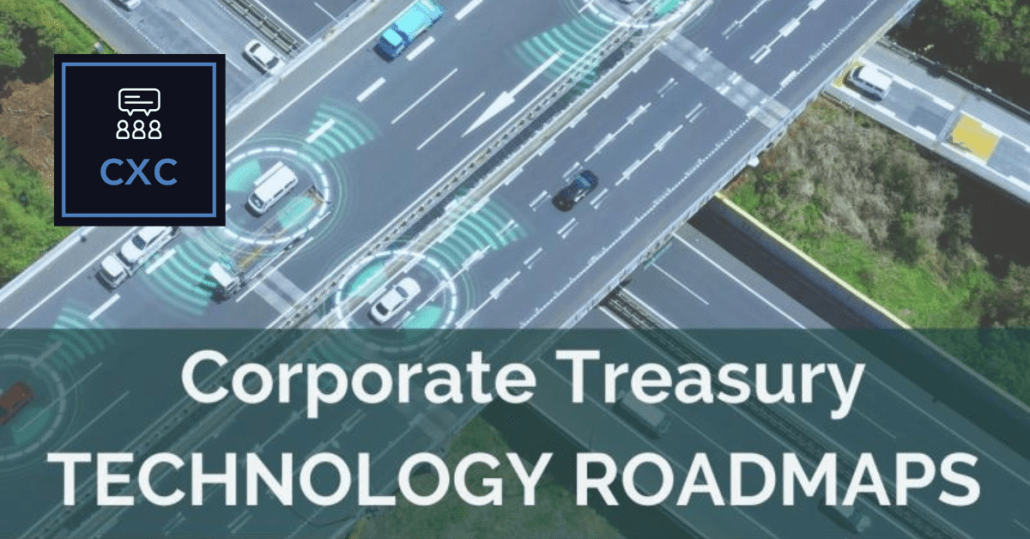Corporate Treasury Technology Roadmaps
By ComplexCountries
25/09/2023
Technology is changing the way many businesses work: with online commerce, many traditionally B2B businesses are moving to B2C.

Can’t get enough? Check out these latest items
 https://treasuryxl.com/wp-content/uploads/2024/01/Template_VACANCY-featured.png
200
200
treasuryXL
https://treasuryxl.com/wp-content/uploads/2018/07/treasuryXL-logo-300x56.png
treasuryXL2025-07-18 07:00:522025-07-15 12:00:53Vacature Senior Financial Risk Manager – Utrecht
https://treasuryxl.com/wp-content/uploads/2024/01/Template_VACANCY-featured.png
200
200
treasuryXL
https://treasuryxl.com/wp-content/uploads/2018/07/treasuryXL-logo-300x56.png
treasuryXL2025-07-18 07:00:522025-07-15 12:00:53Vacature Senior Financial Risk Manager – Utrecht https://treasuryxl.com/wp-content/uploads/2022/09/ACT-commodities.png
200
200
treasuryXL
https://treasuryxl.com/wp-content/uploads/2018/07/treasuryXL-logo-300x56.png
treasuryXL2025-07-17 14:51:592025-07-17 14:51:59Tax and Treasury Intern @ ACT
https://treasuryxl.com/wp-content/uploads/2022/09/ACT-commodities.png
200
200
treasuryXL
https://treasuryxl.com/wp-content/uploads/2018/07/treasuryXL-logo-300x56.png
treasuryXL2025-07-17 14:51:592025-07-17 14:51:59Tax and Treasury Intern @ ACT https://treasuryxl.com/wp-content/uploads/2025/07/InCorpe.png
200
200
treasuryXL
https://treasuryxl.com/wp-content/uploads/2018/07/treasuryXL-logo-300x56.png
treasuryXL2025-07-17 10:24:302025-07-17 10:24:30Senior Analist Corporate Finance @ InCorpe
https://treasuryxl.com/wp-content/uploads/2025/07/InCorpe.png
200
200
treasuryXL
https://treasuryxl.com/wp-content/uploads/2018/07/treasuryXL-logo-300x56.png
treasuryXL2025-07-17 10:24:302025-07-17 10:24:30Senior Analist Corporate Finance @ InCorpe https://treasuryxl.com/wp-content/uploads/2025/04/Treasury-Spring-van-Template-2.png
200
200
treasuryXL
https://treasuryxl.com/wp-content/uploads/2018/07/treasuryXL-logo-300x56.png
treasuryXL2025-07-17 07:00:002025-07-14 13:56:49From Game Boys to AI: How technology is transforming treasury
https://treasuryxl.com/wp-content/uploads/2025/04/Treasury-Spring-van-Template-2.png
200
200
treasuryXL
https://treasuryxl.com/wp-content/uploads/2018/07/treasuryXL-logo-300x56.png
treasuryXL2025-07-17 07:00:002025-07-14 13:56:49From Game Boys to AI: How technology is transforming treasury https://treasuryxl.com/wp-content/uploads/2024/08/Surecomp-BLOGS-featured-3.png
200
200
treasuryXL
https://treasuryxl.com/wp-content/uploads/2018/07/treasuryXL-logo-300x56.png
treasuryXL2025-07-16 07:00:022025-07-14 10:12:47AI in Trade Finance: From Automation to Transformation
https://treasuryxl.com/wp-content/uploads/2024/08/Surecomp-BLOGS-featured-3.png
200
200
treasuryXL
https://treasuryxl.com/wp-content/uploads/2018/07/treasuryXL-logo-300x56.png
treasuryXL2025-07-16 07:00:022025-07-14 10:12:47AI in Trade Finance: From Automation to Transformation https://treasuryxl.com/wp-content/uploads/2023/03/Treasurer-Search-Logo.png
200
200
treasuryXL
https://treasuryxl.com/wp-content/uploads/2018/07/treasuryXL-logo-300x56.png
treasuryXL2025-07-15 13:20:492025-07-17 10:27:10Senior Financial Risk Manager – Utrecht @ Treasurer Search
https://treasuryxl.com/wp-content/uploads/2023/03/Treasurer-Search-Logo.png
200
200
treasuryXL
https://treasuryxl.com/wp-content/uploads/2018/07/treasuryXL-logo-300x56.png
treasuryXL2025-07-15 13:20:492025-07-17 10:27:10Senior Financial Risk Manager – Utrecht @ Treasurer Search https://treasuryxl.com/wp-content/uploads/2024/10/Embat-BLOGS-featured-2.png
200
200
treasuryXL
https://treasuryxl.com/wp-content/uploads/2018/07/treasuryXL-logo-300x56.png
treasuryXL2025-07-15 07:00:292025-07-14 09:39:46The art and science of building a financial team
https://treasuryxl.com/wp-content/uploads/2024/10/Embat-BLOGS-featured-2.png
200
200
treasuryXL
https://treasuryxl.com/wp-content/uploads/2018/07/treasuryXL-logo-300x56.png
treasuryXL2025-07-15 07:00:292025-07-14 09:39:46The art and science of building a financial team https://treasuryxl.com/wp-content/uploads/2024/10/Carlo-_BLOGS-Expert-featured-2.png
200
200
treasuryXL
https://treasuryxl.com/wp-content/uploads/2018/07/treasuryXL-logo-300x56.png
treasuryXL2025-07-14 08:34:312025-07-14 08:34:31Banks and Stablecoins: a first step towards bridging traditional finance and the crypto world
https://treasuryxl.com/wp-content/uploads/2024/10/Carlo-_BLOGS-Expert-featured-2.png
200
200
treasuryXL
https://treasuryxl.com/wp-content/uploads/2018/07/treasuryXL-logo-300x56.png
treasuryXL2025-07-14 08:34:312025-07-14 08:34:31Banks and Stablecoins: a first step towards bridging traditional finance and the crypto world https://treasuryxl.com/wp-content/uploads/2024/01/Template_VACANCY-featured.png
200
200
treasuryXL
https://treasuryxl.com/wp-content/uploads/2018/07/treasuryXL-logo-300x56.png
treasuryXL2025-07-11 07:00:512025-07-11 08:42:17Vacancy Treasury Operations Analyst – South Holland
https://treasuryxl.com/wp-content/uploads/2024/01/Template_VACANCY-featured.png
200
200
treasuryXL
https://treasuryxl.com/wp-content/uploads/2018/07/treasuryXL-logo-300x56.png
treasuryXL2025-07-11 07:00:512025-07-11 08:42:17Vacancy Treasury Operations Analyst – South Holland



Logistics and supply chains are being transformed. Ride hailing and food delivery services operate real time payment systems. Assets we used to buy are increasingly available as a service, often linked to the internet of things.
Where are our banks in this turmoil? And how are treasurers adapting? We wanted to get a first view. Judging by the response we received, we are clearly not alone in being very interested.
This report is long – even the summary takes several pages, and it does not capture all the nuances. It is well worth reading the detail – it clearly lays out the challenges treasurers are facing.
Business transformation
For the time being, treasurers are adopting a wait-and-see approach to business changes. When the business moves to B2C, or becomes a full asset as a service enterprise, treasury will adapt accordingly. In the meantime, treasurers see no need to get ahead of the business, or even necessarily be a change agent.
On the other hand, CXC members who are in the new, online enabled industries are, of necessity, proving to be early adopters of the new technologies.
Communicating with banks
Over the years, centralised global and regional treasury management has been enabled by online banking tools with balance reporting, remote account management and payment initiation.
This has brought enormous benefits to treasury management. But it is not perfect:
All treasurers are interested in using APIs to get more frequent and detailed communication with their banks. However, most are still in the early stages, and there are issues: not all banks provide APIs, there is no standardisation, and – perhaps surprisingly – balance information is not always available. On the other hand, APIs enable event notification.
Some treasurers are using the enhancements in SWIFT, such as SWIFTNet and SWIFT GPI, to improve the functionality: some participants access SWIFT via a bureau.
Treasury systems
The plethora of different banking systems and approaches has created an industry: Treasury Management Systems (TMSs) take all the data from the many different banking tools and interfaces, consolidate it, and provide a single tool for managing balances, payments, and often transferring cash between different accounts.
Participants on the calls use the following TMSs, with varying levels of satisfaction:
Apart from Excel (of course!), they use the following to provide necessary functionality:
All these systems interface with the ERP and other internal systems – sometime using APIs. Increasingly, bots are being used in this process. Bots enhance productivity – but they create potential issues with maintenance.
It is also a challenge to keep up with evolving external technologies: online payments come in different flavours in different countries, and systems like AliPay and WeChat Pay in China do not provide an easy interface for detailed customer information.
So – why not use the treasury management module in SAP or Oracle? It is a huge benefit working with the same data as the rest of the business – but the dependency on central IT brings longer lead times and less flexibility. With the new S/4Hana, functionality has been significantly improved, at a high purchase price. Watch this space….
Finally, one participant mentioned the difficulty involved in upgrading the TMS, when the system uses older technology: all existing data bases may need to be restructured.
Straight through processing
This remains elusive. Several participants are using bots to automate accounting and reconciliations. They are also using the TMSs, often with enhancements, to propose FX hedging transactions. However, few are yet allowing the trades to flow automatically – most still prefer to have a manual release.
The exceptions we are beginning to see are in the newer industries, where a need for a lot of small value, real time payments, is forcing a move towards automation.
Real time
Inevitably, these systems are moving towards more real time data. However, they often interface with systems which are still batch or involve delayed processing. So – are we moving towards real time treasury, and, if so, what will the benefits be?
The consensus on the calls was that this will tend to happen, but it is not a goal in itself. There are cases where it is important to know where you are, such as when considering counterparty limits or balancing cash across accounts. But, in many cases, it is not a requirement.
Bottom Line
As always, treasurers are having to balance many conflicting priorities. They also face a choice of alternative solutions, which often borders on the bewildering.
In the past, we had a series of batch processes, where we would get the data from different systems via printed reports, and collate it by hand – or by spreadsheet. We don’t know exactly what the future will look like, but it is already showing up in the form of data being shared real time across the company, its banks, suppliers and customers, and being brought into a tool which will either take decisions, or at least suggest them.
Treasurers have already started this journey. The one thing which is sure is that it will not be dull.
This report was produced by Monie Lindsey based on a Treasury Peer Call chaired by Damian Glendinning
To access this report
Access to the full report is available to Premium Subscribers of ComplexCountries. Please log in on the website of ComplexCountries to access the download.
Please contact ComplexCountries to find out about their subscription packages.